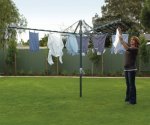Starting to get the backyard landscaping project underway and trying to figure out the irrigation system.
This is the plan I've come up with, if anyone knows about this stuff, could you critique it and tell me what's good and what's not?
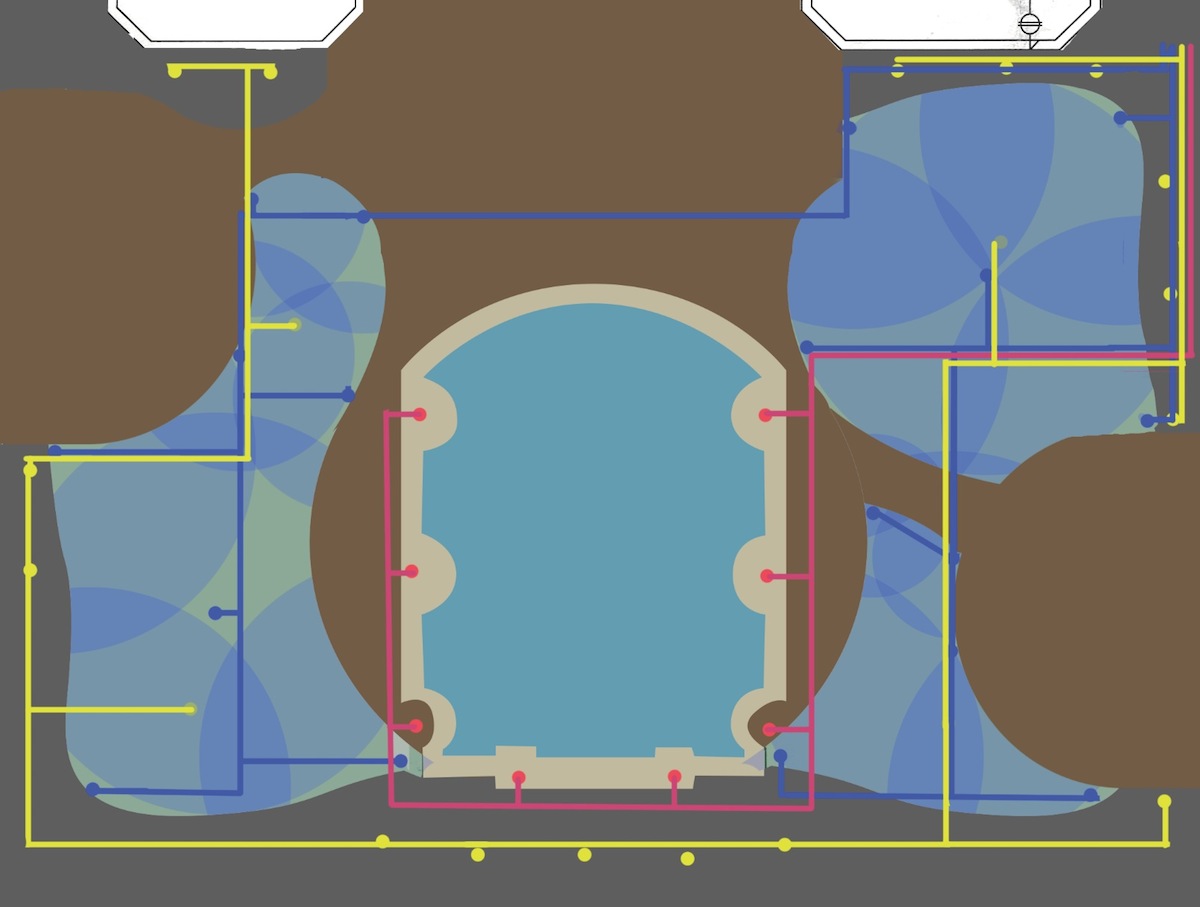
The backyard size is 60' wide X 43' deep (from the bay window edge to the back fence).
The blue lines are for sprinklers and I have it setup on 2 valves, 9 sprinklers per valve. The yellow lines are for bushes and trees (on 1 valve) and the red lines are for the palm trees around the pool and two pots (on 1 valve).
The brown areas are pavers and I tried to keep as much of the piping from not being under the pavers as possible. The wide area near the top I'm going to run a 4" sleeve and run the pipe through that. The grey area around the edges is gravel and the rest is grass (blue area showing the pattern of the sprinklers).
Few questions off the bat...is 1 valve enough for all the bushes/trees? Do I need the palm trees/pots on their own line/valve or should I just tie it into the yellow line? I'm going to run PVC pipe for both the sprinklers and the dripper system.
This is the plan I've come up with, if anyone knows about this stuff, could you critique it and tell me what's good and what's not?

The backyard size is 60' wide X 43' deep (from the bay window edge to the back fence).
The blue lines are for sprinklers and I have it setup on 2 valves, 9 sprinklers per valve. The yellow lines are for bushes and trees (on 1 valve) and the red lines are for the palm trees around the pool and two pots (on 1 valve).
The brown areas are pavers and I tried to keep as much of the piping from not being under the pavers as possible. The wide area near the top I'm going to run a 4" sleeve and run the pipe through that. The grey area around the edges is gravel and the rest is grass (blue area showing the pattern of the sprinklers).
Few questions off the bat...is 1 valve enough for all the bushes/trees? Do I need the palm trees/pots on their own line/valve or should I just tie it into the yellow line? I'm going to run PVC pipe for both the sprinklers and the dripper system.



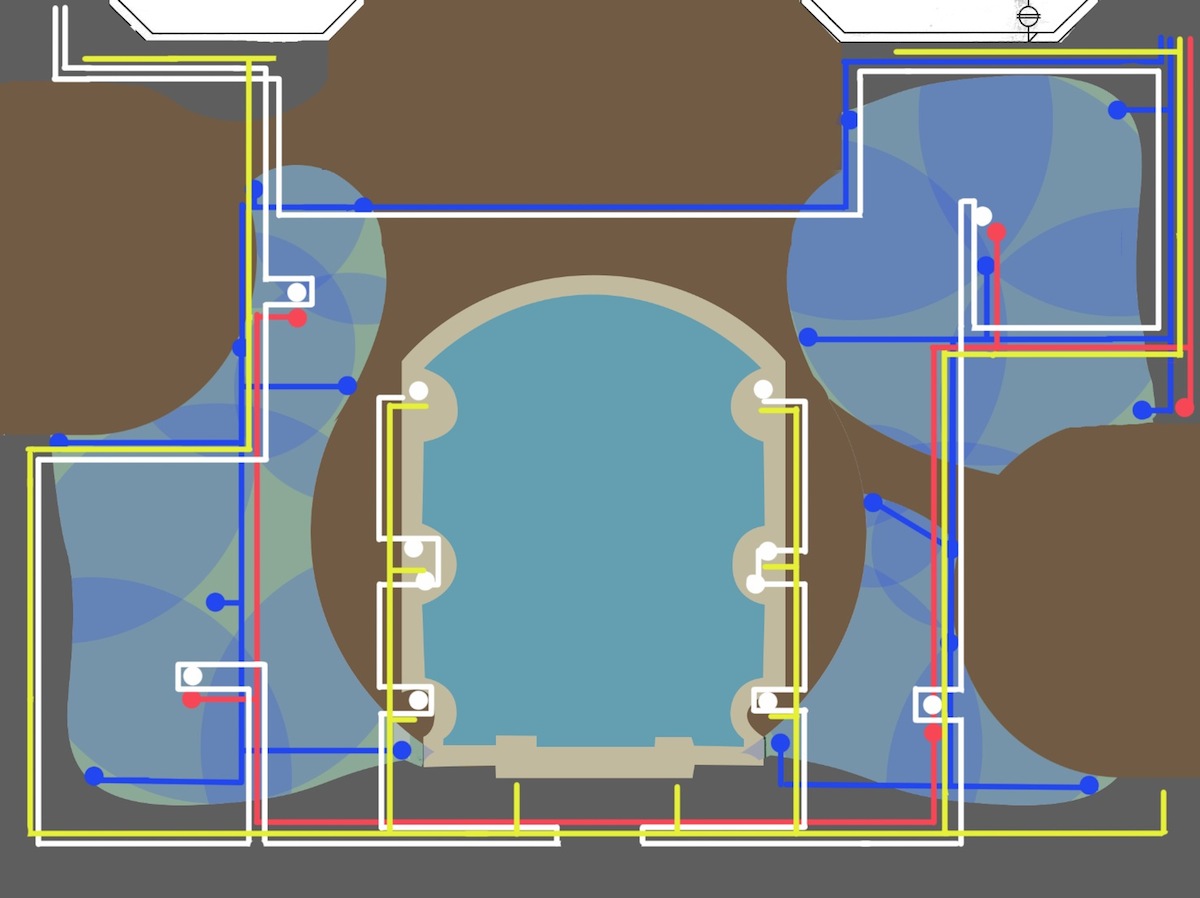
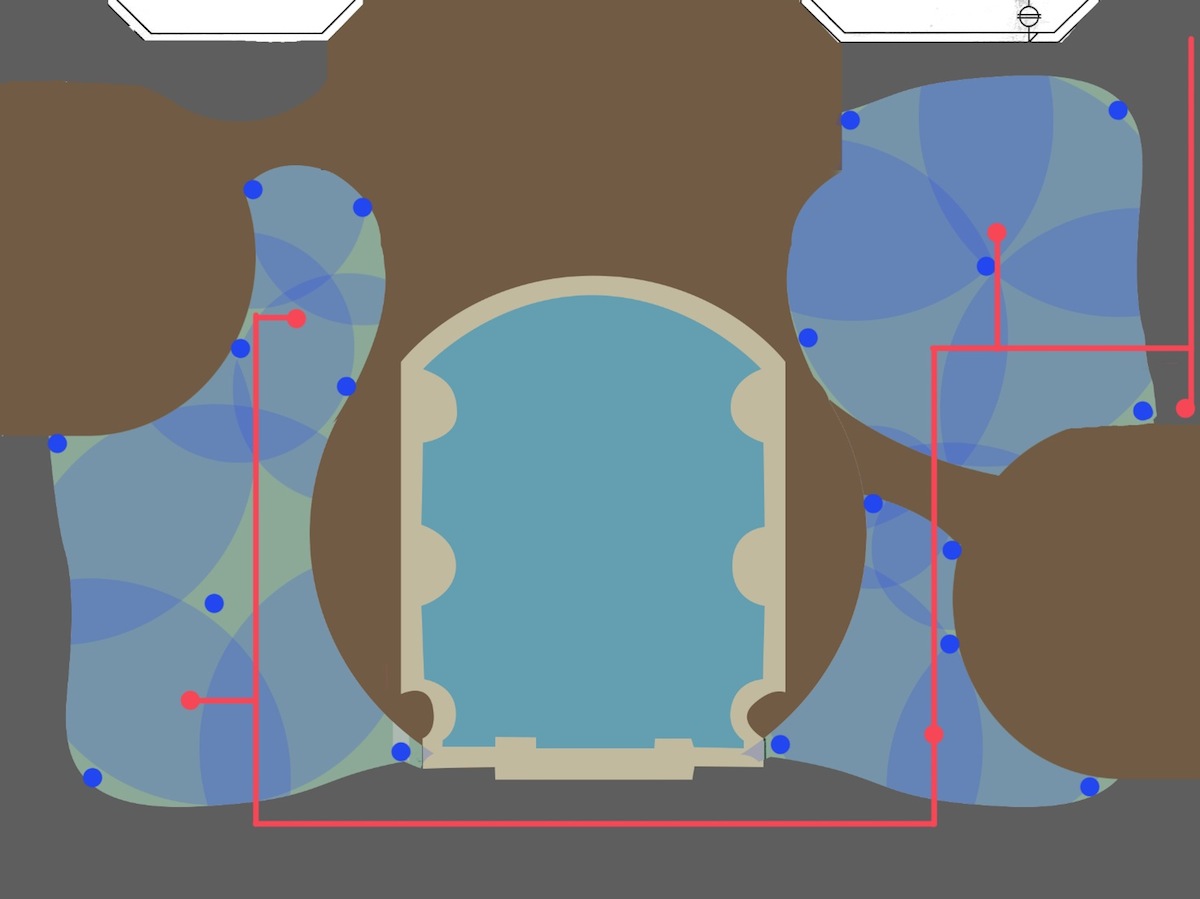

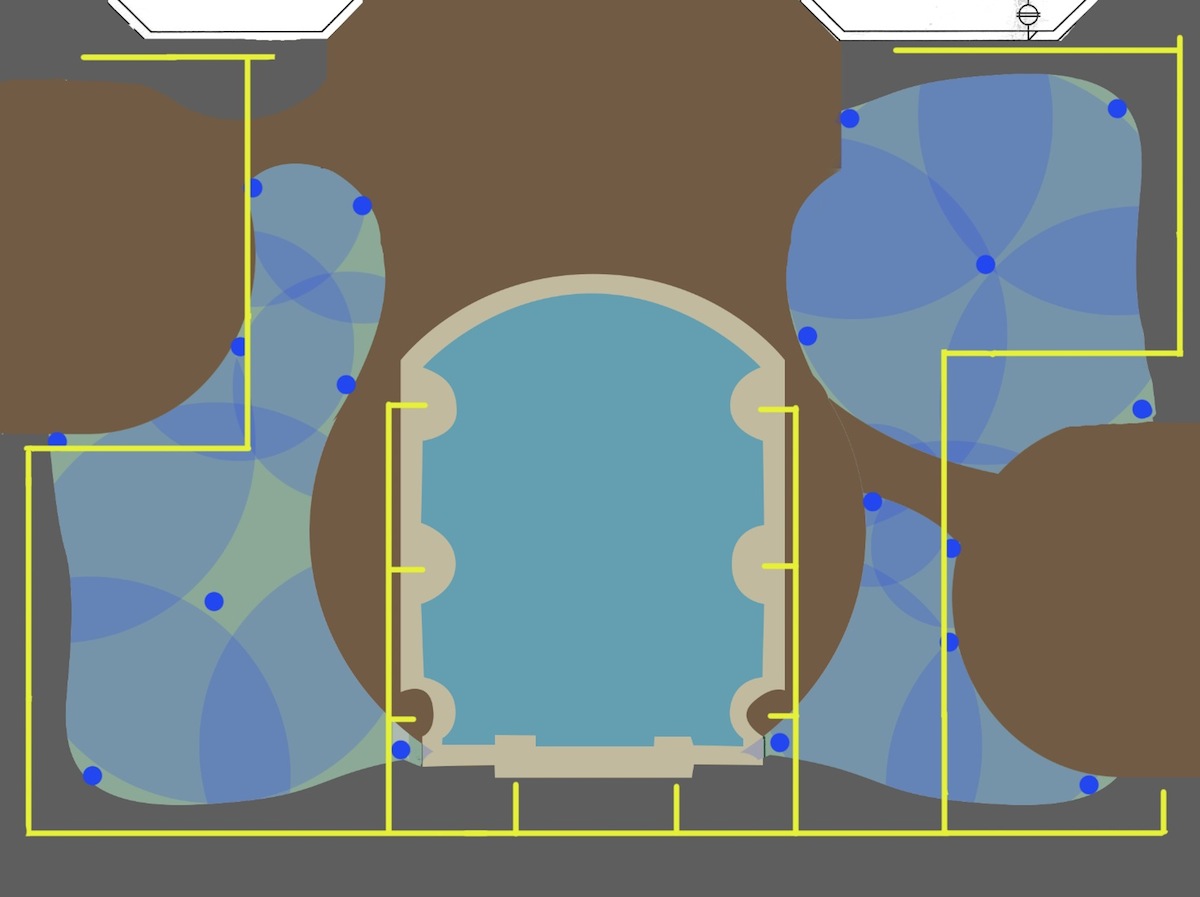
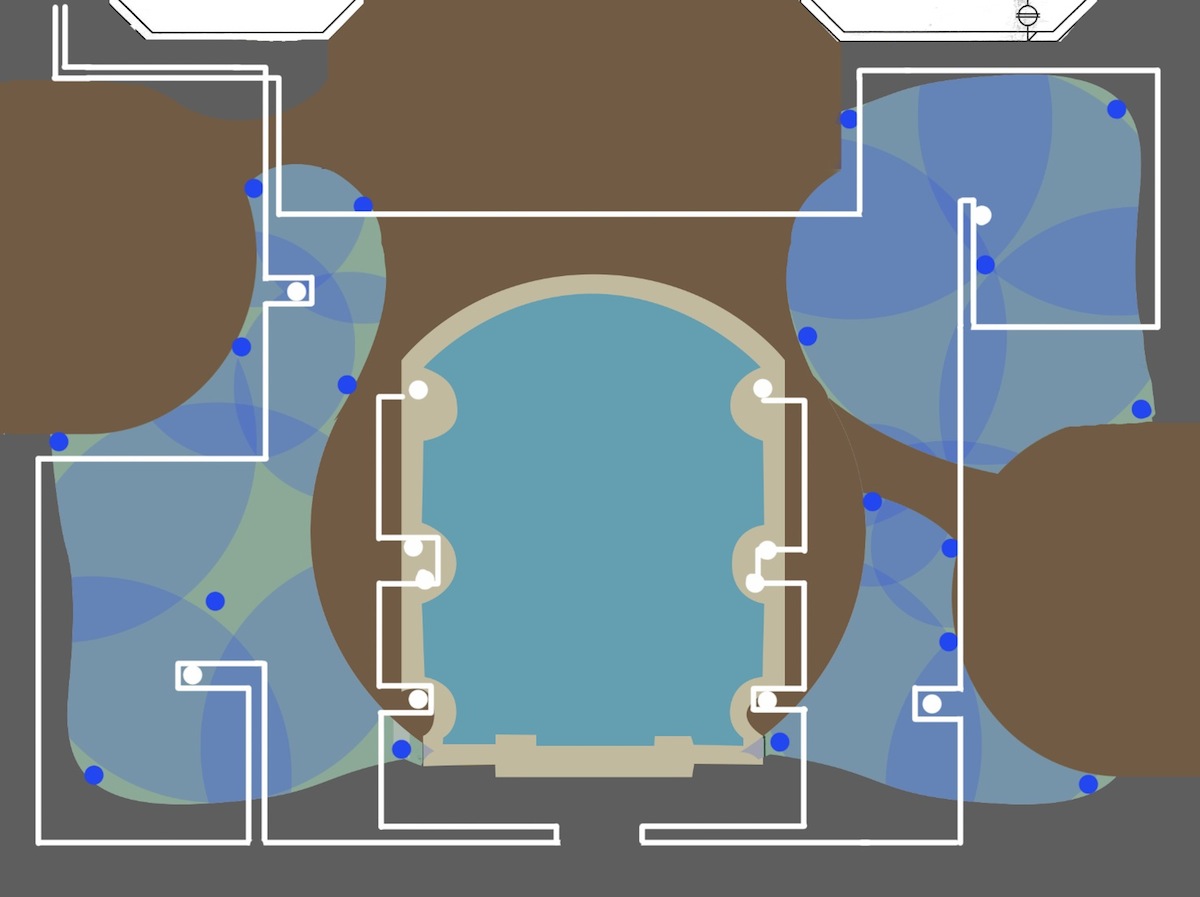
 ... or maybe it is allow with some special equipment on the transformer.
... or maybe it is allow with some special equipment on the transformer.